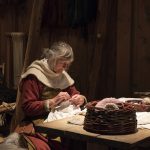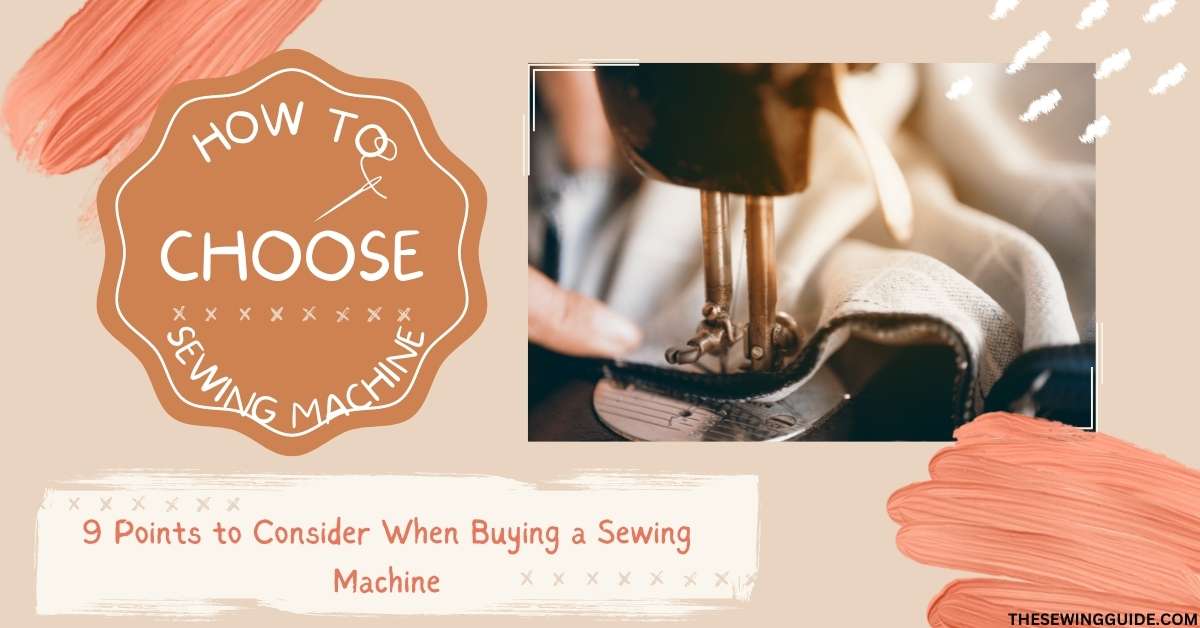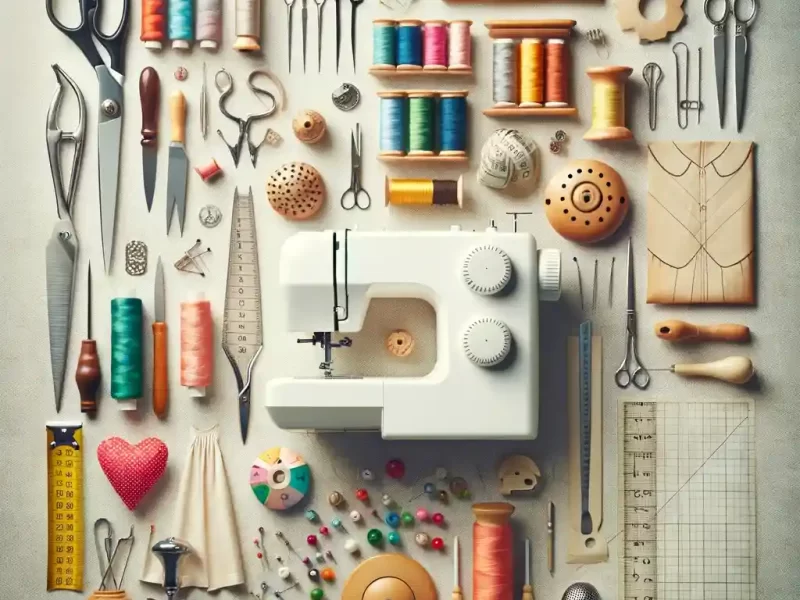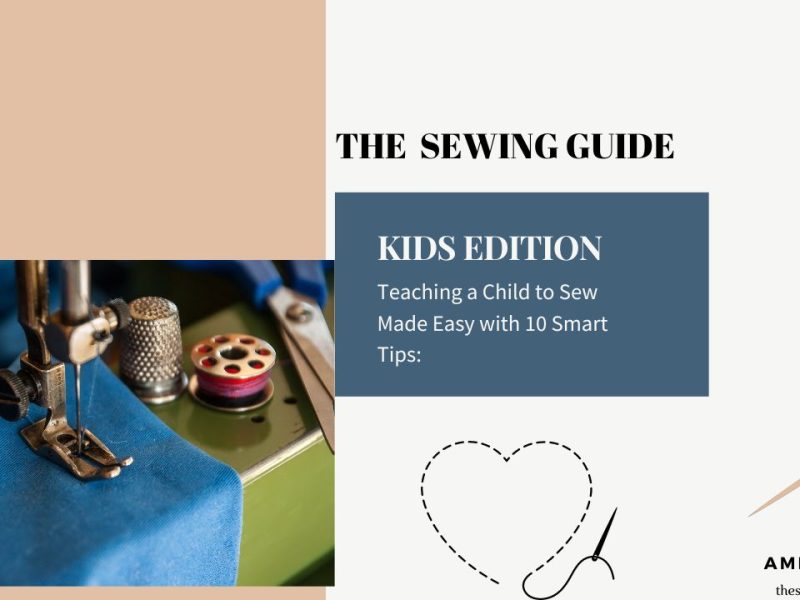First of all, think about your sewing status before beginning your quest. How much knowledge do you have? The complexity of machines varies greatly, from simple attachments to a wide variety of intricate features.
Following are the things that you consider before buying a new sewing machine.
1. Who is the sewing machine for?
Do you intend to keep the sewing machine for yourself? If so, take into account your stitching background. Are you an expert, a novice, or a beginner? When choosing the best sewing machine, this is the most crucial thing to take into account. Budget, make, size, stitch options, and so much more may all be determined with the assistance of just one inquiry.
2. What is your budget?
Sewing machines come in a wide range of prices. Before beginning your search, you must take your budget into account. The expensive devices might not be within your means if you have a tight budget. There are primarily 2 types of pricing strategies:
Machines for light to medium weight cloth and work range in price from £200 to £350. This is a very basic overview. You should also think about how many more features you could require.
Machines for medium- to heavy-weight cloth production can range in price from $350 to $5,000. Again, this is dependent on add-ons.
A quality home sewing machine ought to be able to provide you with years of dependable, high-quality service. To prevent any problems, it’s imperative that you get the greatest sewing machine within your means.
Remember, even if you have a very limited budget, it might not be the best idea to opt for a cheap, plastic machine. It won’t last, and it might put you off sewing altogether. Have a look around and see what quality second-hand machines are available. Rule of thumb; always buy the best you can afford.
3. What projects will the machine be used for?
A sewing machine has to be functional. Think about the tasks you wish to tackle with your sewing machine. Purchasing a cheap, lightweight sewing machine is pointless if you want to stitch your brand-new heavy-duty curtains. Simply put, it won’t happen, and as a result, you’ll become irritated and disappointed.
Buy a sewing machine with the capabilities you require, whether you are a beginner or a seasoned sewer. Always take into account the thickness of the heaviest cloth you will ever use in a sewing machine. The more durable the machine, the better if you’re eager to get started on projects employing materials like denim, strong cotton twill, or anything else with a reasonable weight.
Always consider your sewing expectations before choosing what to stitch.
4. What is the best sewing machine for a beginner?
If this is your first time sewing, welcome! An excellent method to express creativity is through learning to sew. Sewing offers so much pleasure, from producing your own clothes and household goods to crafting unique gifts.
Beginners often need a machine with a limited number of stitches.
Consider the items you wish to sew. You still need a good machine even if the jobs are simple. It must be sturdy enough to support varying fabric weights. The machine must also have all the features and capabilities for your diverse projects. It’s critical to select the appropriate sewing machine accessories.
5. How often will the machine be used?
If this is your first time sewing, welcome! An excellent method to express creativity is through learning to sew. Sewing offers so much pleasure, from producing your own clothes and household goods to crafting unique gifts.
Beginners often need a machine with a limited number of stitches. Consider the items you wish to sew. You still need a good machine even if the jobs are simple. It must be sturdy enough to support varying fabric weights. The machine must also have all the features and capabilities for your diverse projects. It’s critical to select the appropriate sewing machine accessories.
Be brutally sincere with yourself. There is no use in purchasing a wildly costly machine if you intend to use it only infrequently to fix clothing, do some hemming, or do a little embroidery.
If you’ve developed a sewing addiction—trust us, it occurs really easily—you already know you’ll use it frequently. You should choose a machine that is durable, has an internal metal frame, and is worth the money. The ideal strategy is to get the best item you can afford.
6. Do you need additional attachments with your sewing machine?
Sewing machines normally come with a range of additional attachments and features. These can range from very few and basic, to hundreds! It is important to research which attachments come as standard on your machine, and which you can buy separately if needed.
Sewing machine attachments to look out for include:
Presser feet – a good selection can make a big difference to your projects
Buttonhole foot, blind hem foot, zipper foot – these are all important features for making clothing
Different width feet – these are invaluable for basic sewing, allowing you to switch between allowance widths and the zigzag stitch
Walking foot, ¼” foot, freehand embroidery foot – these features are necessary if you want make quilts
If your machine doesn’t come with all the bolts and whistles that you want, ensure that you can buy these separately.
How many stitches will you need in your sewing machine?
7. How noisy is the sewing machine?
This may seem like a silly or even minor concern, yet it is really significant. Many individuals don’t consider this feature when purchasing a sewing machine. But consider this. The frequency of usage of the machine may be impacted if it is too loud.
Most sewers only have time to sew at night and in their own time, unless it is their primary work. Therefore, you wouldn’t want to settle down for some leisurely sewing just to hear a jackhammer in your house!
When choosing your machine, make sure you really test out the functions before your buy it, so you can truly judge how noisy or quiet it is
8. How many stitches do you need?
As little as 10 stitch possibilities are offered on some machines, while as many as 300 stitch variations are offered on others! You actually just need a straight stitch and a zigzag stitch to be a decent or even exceptional seamstress. These are available in several patterns, fashions, widths, and lengths.
Although a sewing machine may have hundreds of stitch possibilities, including different shapes, patterns, styles, widths, and lengths, do you actually intend to utilize them? Even experienced seamstresses seldom ever stray from the tried-and-true straight or zigzag stitch.
Remember to have a good stock of thread, spare needles, pins, and tape
9. Best sewing machine brands
All of us are familiar with the well-known, well-known sewing machine manufacturers that are recognized for their excellence and craftsmanship. Among the top brands in the sector are Bernina, Singer, Brother, and Janome. But which company makes the top sewing machine?
The features that set machines apart are:
Included features
Additional features
Build quality
Quality of layout and design
Ability to sew every type of fabric or textile
The life expectancy of the machine
There are also different types of sewing machines, which include:
Electronic sewing machines – devices are powered by a single motor that moves the needle using an electrical impulse. The machine is run by the feet, freeing the hands to manipulate the cloth. For household sewers, this kind of equipment is excellent.
Computerized sewing machines – Both novice and seasoned sewers will find it simple to use. It is extremely adaptable and operates by employing many motors to control various gadget functions. This incorporates auto-lock, needle functionality, and speed control. extremely accurate, and when linked to a PC, can receive patterns from web sources and memorize previous designs.
Overlockers – a machine for hems and seams in finishing. There are various possibilities for fancy stitching. They can finish the edge, stitch a seam, and trim extra fabric, which is a huge advantage.
The most crucial thing to keep in mind is to avoid buying on a budget or you risk having to buy again! Make sure you get your machine from reputable merchants. Remember that the machine itself is just as essential as the brand. The low end of a good brand is always preferable to the high end of an ordinary brand. Make sure you complete your study because there are many sewing machine specialists on the market.

I love sewing, I am sewing for the last 15 years and started this blog with the help of my niece to spread sewing-related guides all over the world.
Sewing could be a full-time profession or hobby, and I wish to make a change by adding more people to the sewing world.


